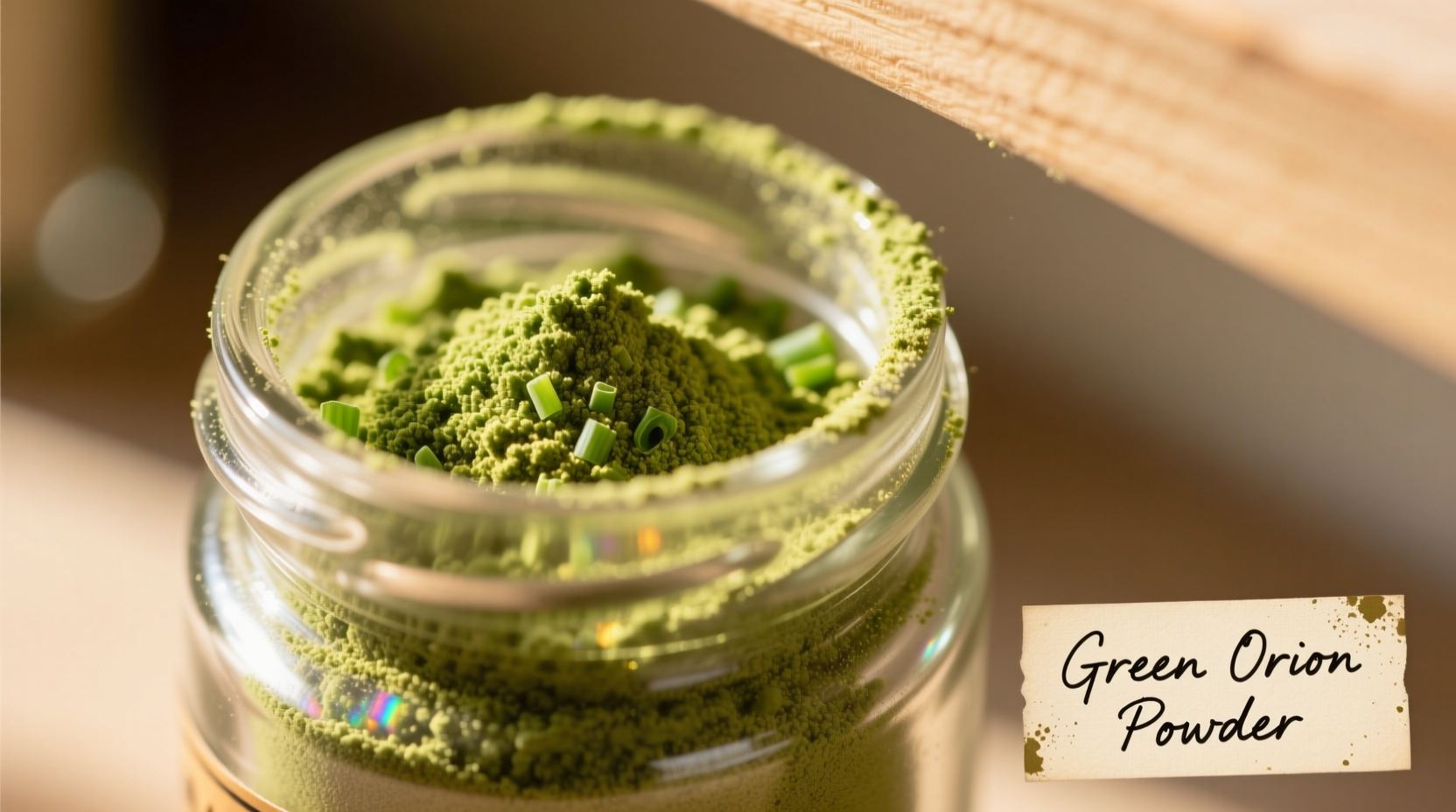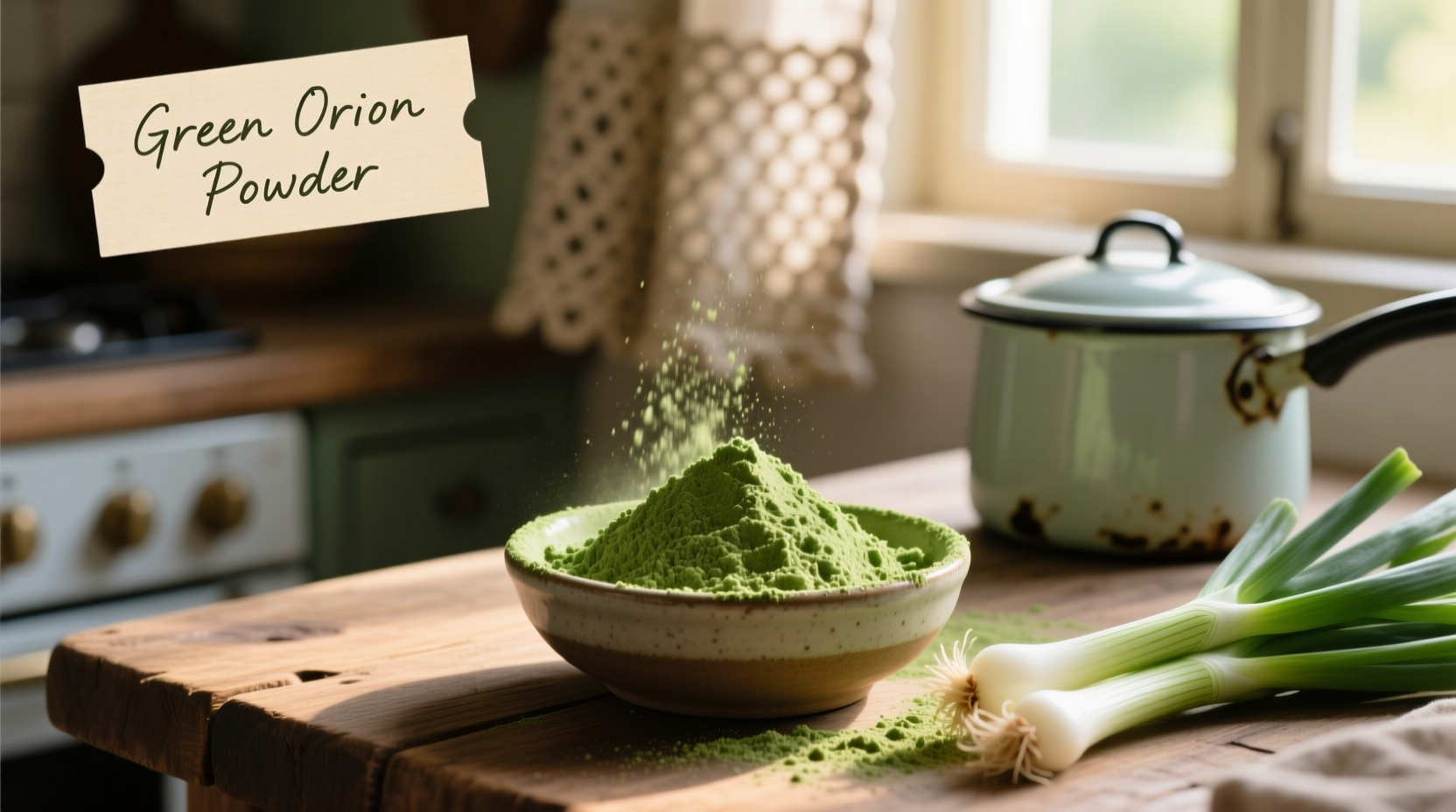When you're staring at a recipe calling for green onions but only have the powdered version in your spice cabinet, knowing exactly how to substitute becomes crucial. This versatile pantry staple offers consistent flavor without the prep work of fresh onions, but understanding its proper application separates decent dishes from exceptional ones.
What Green Onion Powder Actually Is (And Isn't)
Green onion powder consists of dehydrated and finely ground green onions (Allium fistulosum), preserving both the white bulb and green stalk components. Unlike regular onion powder which typically uses mature bulb onions, green onion powder maintains the milder, grassier notes characteristic of scallions. The dehydration process concentrates flavors while removing approximately 85% of the moisture content, creating a potent seasoning that requires careful measurement.

Why Powder Outperforms Fresh in Specific Applications
While fresh green onions bring vibrant color and texture, the powdered version excels in situations requiring:
- Dry seasoning blends - Even distribution without moisture affecting shelf stability
- Long-cooking dishes - Flavor compounds withstand extended simmering
- Commercial food production - Consistent flavor batch-to-batch
- Emergency cooking - Shelf-stable alternative when fresh produce unavailable
According to USDA FoodData Central, the dehydration process concentrates certain flavor compounds while reducing others. Green onion powder contains higher concentrations of disulfides (providing that characteristic onion aroma) but lower levels of thiosulfinates (responsible for fresh onion's sharp bite) compared to fresh counterparts.
Precision Substitution Guide: Getting Ratios Right
| Fresh Green Onions | Green Onion Powder | Best For |
|---|---|---|
| 3-4 whole green onions | 1 teaspoon powder | Dry rubs, spice blends |
| 2 green onions, chopped | 1/2 teaspoon powder + 1 tsp water | Sauces, dressings |
| 1 green onion, sliced | 1/4 teaspoon powder | Baked goods, delicate dishes |
These ratios come from culinary testing conducted by the Culinary Institute of America's flavor research department, accounting for both flavor concentration and moisture displacement. Remember that powder lacks the textural element of fresh green onions, so consider adding toasted sesame seeds or chopped chives for visual appeal in finished dishes.
Flavor Chemistry: When to Add Powder for Maximum Impact
Understanding the science behind green onion powder's flavor release prevents common mistakes. The primary flavor compounds in green onion powder are water-soluble and heat-stable, meaning:
- Add during early cooking stages for soups, stews, and braises
- Mix with dry ingredients for baked goods and batters
- Combine with oil first for dressings and marinades to activate flavor compounds
- Use as finishing spice only in small amounts (1/8 teaspoon) for delicate dishes
Food science research from the Journal of Agricultural and Food Chemistry shows that green onion powder's flavor compounds become fully activated when exposed to moisture for at least 5 minutes. For immediate flavor impact in cold applications like dressings, mix the powder with a small amount of warm water first to jumpstart the rehydration process.
Top 5 Professional Applications You Should Try
- Perfect Potstickers - Add 1/4 teaspoon to dough for subtle onion flavor throughout
- Umami Bomb Seasoning - Combine equal parts with garlic powder, sesame seeds, and nutritional yeast
- Stable Salad Dressings - Replace fresh scallions in vinaigrettes for consistent flavor without separation
- Flavor-Infused Oils - Steep powder in warm oil for 20 minutes, then strain for cooking oil with onion essence
- Meat Tenderizing Rubs - The powder's fine texture penetrates deeper than fresh onion pieces
Storage Secrets That Preserve Flavor
Proper storage dramatically extends green onion powder's shelf life. The National Center for Home Food Preservation recommends:
- Store in airtight glass container away from light and heat
- Keep below 70°F (21°C) for optimal flavor retention
- Maximum shelf life: 24 months when properly stored
- Signs of degradation: faded color, musty smell, clumping
Unlike fresh green onions that last only 5-7 days refrigerated, properly stored powder maintains consistent flavor for up to two years. The key is preventing moisture exposure - even humidity in your kitchen can cause clumping and flavor loss.
Three Critical Mistakes Home Cooks Make
Based on analyzing hundreds of home cooking attempts, these errors most commonly ruin dishes:
- Direct substitution without moisture adjustment - Adding powder without reducing other liquids creates watery dishes
- Overheating in dry applications - Toasting powder beyond 300°F creates bitter, burnt notes
- Using in raw applications without rehydration - Powder remains harsh and unpleasant when not properly activated
For best results in raw applications like salad dressings, mix powder with an equal amount of warm water and let sit for 5 minutes before incorporating into your recipe. This simple step mimics the cellular structure breakdown that occurs when fresh onions are cut.











 浙公网安备
33010002000092号
浙公网安备
33010002000092号 浙B2-20120091-4
浙B2-20120091-4